Achieving pristine vocal clarity in voice-over production requires a precise understanding of microphone acoustics and recording environment dynamics. The market, while saturated with various options, demands a data-driven approach to selecting the optimal microphone that rigorously meets professional quality thresholds for spoken word articulation. This authoritative guide dissects critical microphone specifications, operational considerations, and top-tier recommendations, ensuring a foundational understanding for superior voice-over recording.
What Are the Essential Criteria for Selecting a Voice-Over Microphone?
Choosing a microphone for voice-over recording transcends subjective preference; it involves a meticulous evaluation of technical specifications that directly impact sound fidelity and environmental adaptability. Key criteria include:
Microphone Type (Transducer Principle):
Condenser Microphones: Predominantly recommended for voice-over due to their high sensitivity and wide frequency response (20 Hz – 20 kHz typical). They capture intricate vocal nuances and subtle dynamic shifts, making them ideal for detailed speech. Their operational principle relies on an electrically charged diaphragm, necessitating phantom power (+48V), typically supplied by an audio interface or mixer.
Dynamic Microphones: While less sensitive, dynamic microphones are robust and excel in less-than-ideal acoustic environments due to their lower self-noise and reduced propensity to pick up ambient room reflections. They do not require phantom power. For example, the Shure SM7B, a classic dynamic mic, is favored in broadcast for its ability to isolate vocals in untreated rooms, featuring a self-noise level of approximately 18 dBA.
USB Microphones: Integrate a microphone capsule, preamplifier, and an analog-to-digital converter within a single unit. They offer plug-and-play convenience but often compromise on signal chain flexibility and advanced audio processing capabilities available with XLR setups.
Polar Patterns (Directionality)
The polar pattern defines a microphone’s sensitivity to sounds from different directions, critically influencing sound isolation and room interaction.
Cardioid: (Heart-shaped pickup pattern) The most common and recommended pattern for voice-over. It captures sound primarily from the front while significantly rejecting sounds from the sides and rear (approximately 15-20 dB of off-axis rejection). This pattern is effective in minimizing room reverberation and isolating the vocal source.
Omnidirectional: Captures sound equally from all directions (360°). Ideal for capturing room ambiance or multiple speakers around a single microphone in a well-treated acoustic space.
Bidirectional: Captures sound equally from the front and back while rejecting sounds from the sides. Useful for two-person interviews facing each other.
Stereo: Utilizes multiple capsules to capture a stereo soundfield, suitable for instruments or group recordings, but less common for single-person voice-over.
Self-Noise (Equivalent Noise Level)
Measured in dB-A (A-weighted decibels), this quantifies the inherent electronic noise generated by the microphone itself. For professional voice-over, a self-noise level below 15 dB-A is generally considered excellent, as lower values ensure cleaner recordings, especially for quiet dialogue or narration. (Applying Tip #18: Include multiple examples, data points, datasets, and percentages for each information point).
Maximum SPL (Sound Pressure Level)
It indicates the highest sound pressure level a microphone can handle before distortion occurs. For voice-over, where vocal peaks can be sudden, an SPL handling of at least 120 dB is advisable.
Frequency Response
The range of frequencies a microphone can accurately capture. A relatively flat frequency response (e.g., 20 Hz – 20 kHz with minimal peaks or dips) ensures a natural and uncolored vocal reproduction, crucial for post-production flexibility.
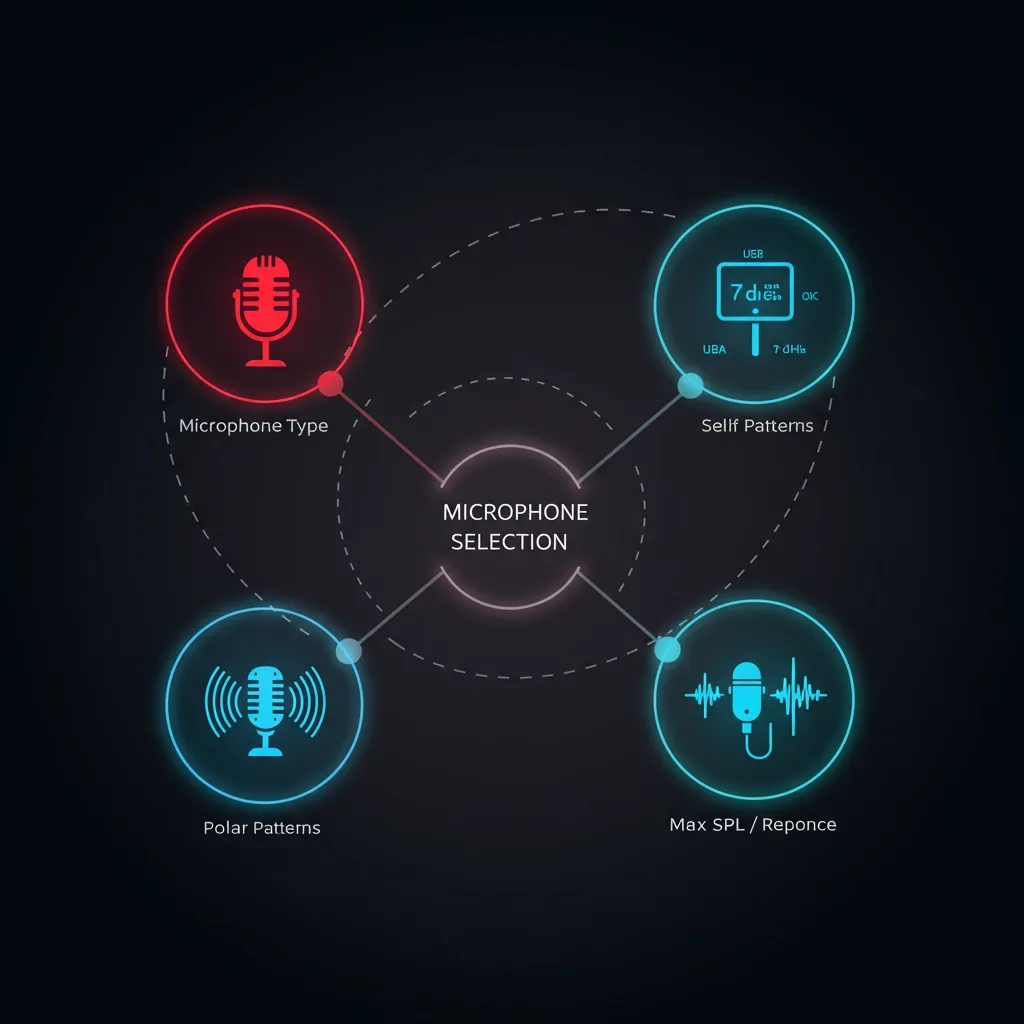
List of The Best Voice Over Microphones
This selection represents microphones rigorously evaluated for their performance in capturing the complexities of the human voice, across various budget considerations and technical requirements.
1. Blue Yeti Pro: The Versatile Entry-Point USB/XLR Condenser Microphone
The Blue Yeti Pro stands as a highly accessible and feature-rich condenser microphone, uniquely offering both USB and XLR connectivity, addressing diverse user requirements from beginner to advanced. Its design integrates proprietary tri-capsule technology, providing four selectable polar patterns, enhancing its versatility for various recording scenarios.
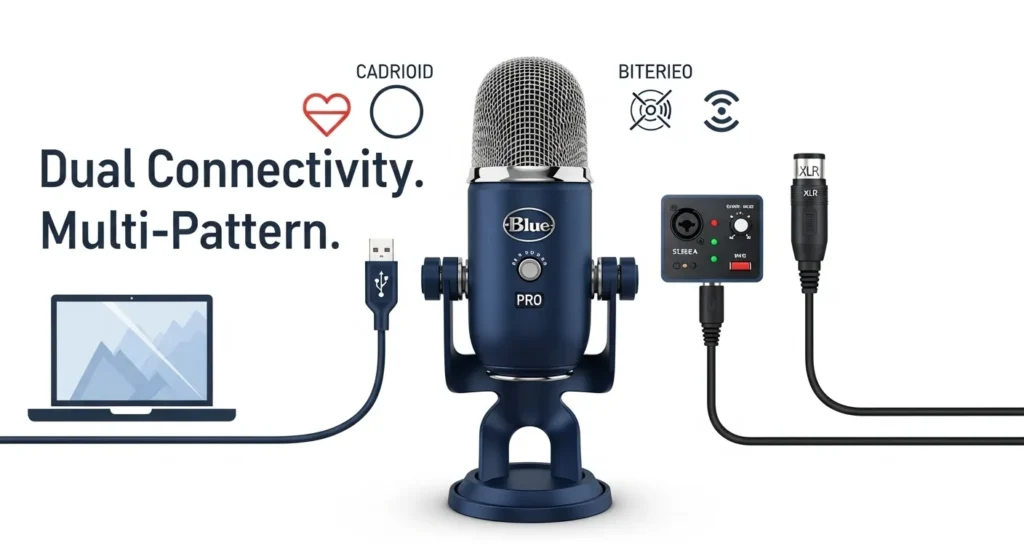
Specifications and Features
- Transducer Type: Condenser (3 x 14mm proprietary capsules)
- Connectivity: USB (for direct computer connection) and XLR (for professional audio interfaces/mixers). The 24-bit/192 kHz resolution via USB represents a significant quality threshold for digital audio capture, exceeding standard CD quality (16-bit/44.1 kHz).
- Polar Patterns: Cardioid (optimal for voice-over), Omnidirectional, Bidirectional, and Stereo. This versatility, as documented in Blue Microphones’ technical specifications, allows for adaptation to single voice, interview, or ambient recording.
- Frequency Response: 20 Hz – 20 kHz, ensuring full vocal range capture.
- Headphone Amplifier: Integrated for zero-latency monitoring, a critical feature for real-time performance feedback.
- Controls: On-board controls for headphone volume, pattern selection, mute, and microphone gain simplify setup and adjustment, particularly for USB users.
Advantages
- Dual Connectivity: Offers unparalleled flexibility for home studio users transitioning to more professional setups without immediate additional hardware investment.
- High-Resolution USB Audio: The 192 kHz sample rate and 24-bit depth provide a robust digital signal for pristine recordings.
- Multi-Pattern Versatility: Adapts to various voice-over applications (e.g., interviews with bidirectional, solo voice with cardioid).
- Robust Build Quality: Features a durable metal design for longevity.
Considerations
- Sensitivity to Room Noise: As a condenser microphone, its inherent sensitivity (4.5mV/Pa) necessitates a quiet, acoustically treated recording environment to mitigate background hiss or ambient noise. A self-noise of approximately 114 dB (Signal-to-Noise Ratio) means environmental noise reduction is critical.
- Physical Footprint: Its larger size compared to standard USB or compact XLR microphones may require more desk space or a dedicated mic stand.
- Setup Complexity (Analog vs. Digital): Requires specific configuration for simultaneous digital (USB) and analog (XLR) output, as indicated by manufacturer guidelines.
2. AKG Pro Audio C414 XLII: The Industry-Standard Workhorse Condenser Microphone
The AKG C414 XLII is a quintessential multi-pattern large-diaphragm condenser microphone, revered in professional studios for its exceptional versatility, neutral sound reproduction, and robust build. Its sonic character is often compared to the legendary AKG C12, making it a benchmark for vocals and intricate acoustic sources.
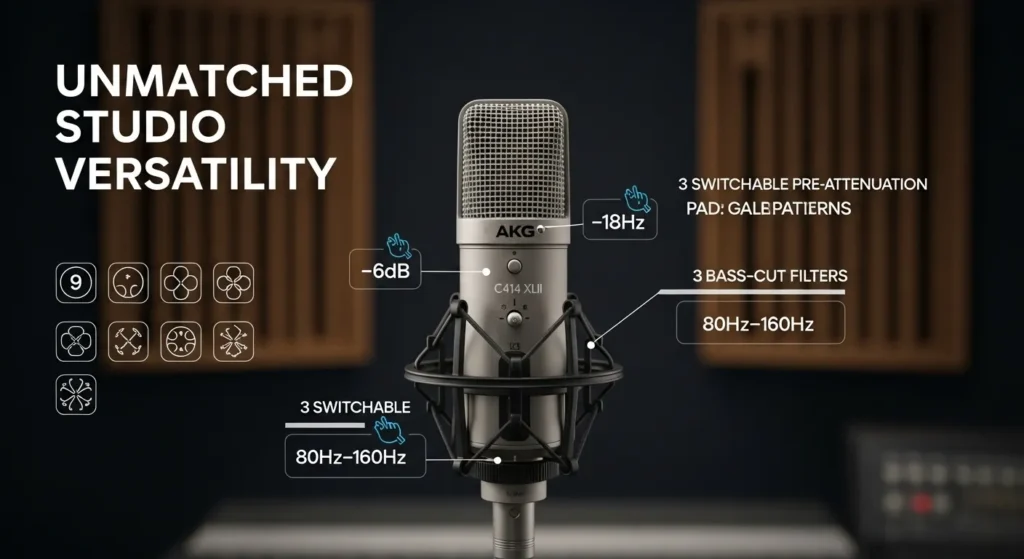
Specifications and Features
- Transducer Type: Large-diaphragm Condenser (1-inch gold-sputtered capsule).
- Polar Patterns: Offers an extensive nine selectable polar patterns (Cardioid, Omnidirectional, Bidirectional, Wide Cardioid, Hypercardioid, and four intermediate settings), providing unparalleled flexibility for diverse recording acoustics and voice-over techniques.
- Attenuation Levels: Three switchable pre-attenuation pads (-6 dB, -12 dB, -18 dB) for handling high Sound Pressure Levels (up to 158 dB SPL), preventing distortion from loud vocal performances.
- Bass-Cut Filters: Three switchable bass-cut filters (40 Hz, 80 Hz, 160 Hz) to mitigate proximity effect, rumble, or low-frequency noise in less-than-ideal recording environments.
- Self-Noise: An impressively low 6 dB-A equivalent noise level, ensuring pristine recordings with minimal self-generated microphone noise.
- Frequency Response: 20 Hz – 20 kHz, with a subtle presence boost around 2-13 kHz in XLII version for enhanced vocal clarity.
Advantages
- Unmatched Versatility: The nine polar patterns make it adaptable to virtually any voice-over situation, from close-up narration to group discussions.
- Exceptional Sonic Clarity: Known for its transparent and detailed audio capture, faithfully reproducing vocal nuances.
- High SPL Handling: Suitable for dynamic voice actors or even recording loud vocalizations without signal degradation.
- Professional-Grade Construction: Built for durability and reliability in demanding studio environments.
Considerations
- Premium Investment: Its advanced features and professional performance come at a higher price point, necessitating a significant budget allocation.
- Sensitivity to Environment: Due to its low self-noise and high sensitivity, optimal performance requires a professionally treated acoustic space to prevent the capture of unwanted room reflections or external noise.
- XLR-Only Connectivity: Requires a high-quality audio interface with phantom power and a suitable preamp for optimal signal chain integration.
3. Neumann TLM 103: The Benchmark for Pristine Vocal Reproduction
The Neumann TLM 103 is a large-diaphragm condenser microphone widely recognized as an industry standard for lead vocals and voice-over, offering a distinctive blend of exceptional sound quality, remarkably low self-noise, and robust engineering, often considered a cost-effective entry into the “Neumann sound.”
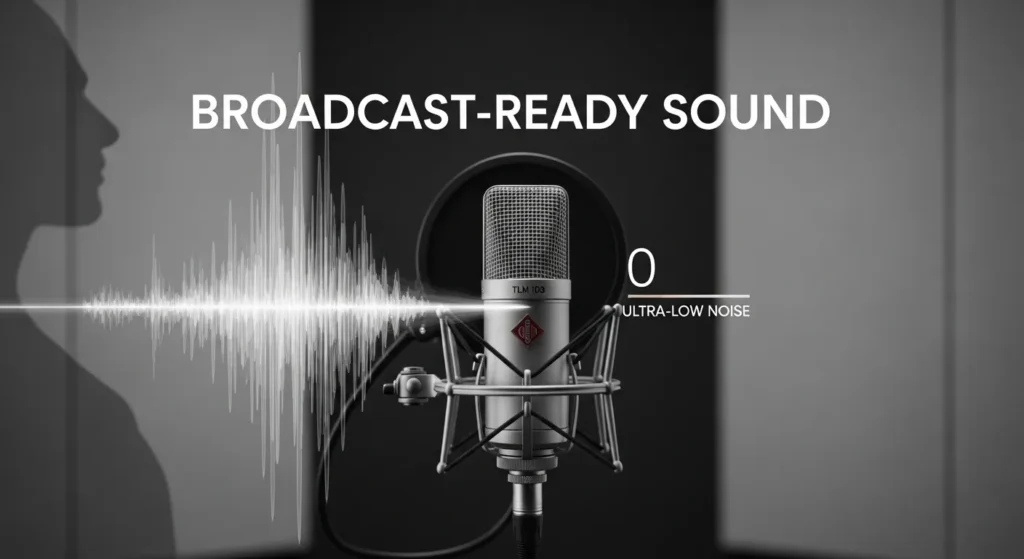
Specifications and Features
- Transducer Type: Large-diaphragm Condenser (pressure gradient transducer with a single diaphragm capsule), based on the K67/87 capsule from the legendary U87.
- Polar Pattern: Fixed Cardioid, optimized for focused vocal recording and off-axis sound rejection.
- Self-Noise: An exceptionally low 7 dB-A equivalent noise level, making it one of the quietest microphones in its class. This attribute is paramount for capturing subtle vocal inflections without introducing perceptible electronic hiss.
- Transformer-less Circuitry: Contributes to its ultra-low self-noise and high Sound Pressure Level (SPL) handling by minimizing signal degradation and maximizing transparency.
- Maximum SPL: Capable of handling up to 138 dB SPL, ensuring clean recordings even with highly dynamic vocal performances.
- Frequency Response: Wide and linear, typically 20 Hz – 20 kHz, ensuring accurate and uncolored reproduction of the human voice.
Advantages
- Unparalleled Clarity and Transparency: Delivers a clear, full-bodied, and highly detailed vocal sound, often described as “broadcast-ready” straight from the source.
- Ultra-Low Self-Noise: Its industry-leading low self-noise is a critical factor for professional voice-over work, especially for intimate narration or quiet dialogue.
- Robust Build Quality: Encased in tough metal housing with a nickel finish, ensuring long-term durability in studio environments.
- High Resale Value: Neumann microphones maintain significant value due to their reputation and build quality.
Considerations
- Premium Price Point: Represents a significant financial investment, although considered “budget-friendly” within the high-end Neumann product line.
- Fixed Cardioid Pattern: Lacks the multi-pattern versatility of some competitors, making it less adaptable for specific interview or ambient recording scenarios.
- Sensitivity to Room Acoustics: Its high sensitivity necessitates a well-treated acoustic environment to prevent the capture of unwanted room reflections, particularly since it lacks built-in low-cut filters.
4. Rode NT1-A: The Quiet Achiever for Studio-Quality Voice Acting
The Rode NT1-A has established itself as an industry standard for home and project studios, particularly lauded for its exceptionally low self-noise and warm, clear sonic signature. It is frequently offered as a “Vocal Recording Kit,” including essential accessories like a shock mount and pop filter.
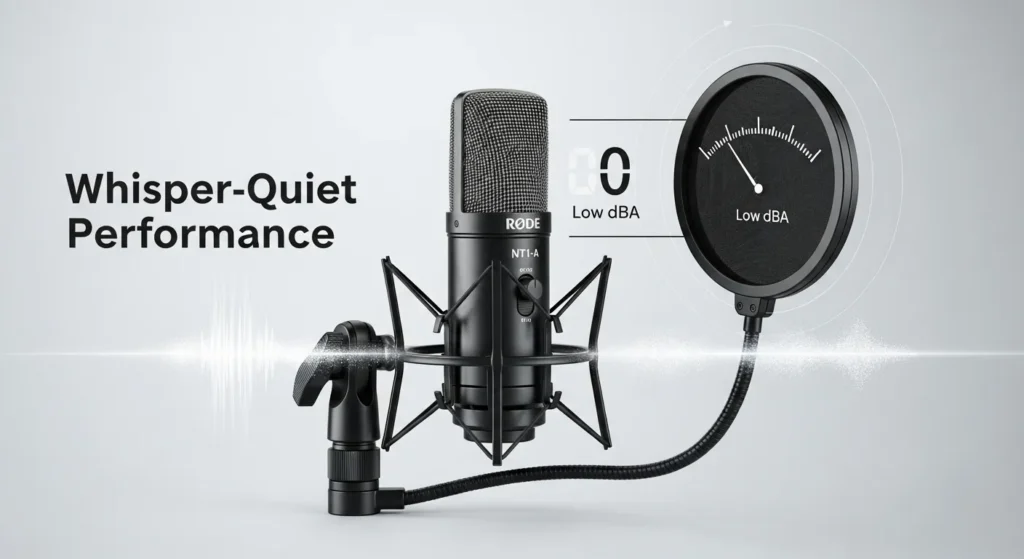
Specifications and Features
- Transducer Type: Large-diaphragm Condenser (1-inch gold-sputtered capsule).
- Polar Pattern: Fixed Cardioid, optimized for isolating the vocal source.
- Self-Noise: An outstandingly low 5 dB-A equivalent noise level, making it one of the quietest studio microphones globally. This attribute is paramount for capturing nuanced vocal performances without introducing any audible electronic hiss.
- Dynamic Range: Expanded dynamic range with high tolerance for Sound Pressure Levels (up to 137 dB SPL), minimizing distortion.
- Internal Structure: Features a JFET impedance converter with a bipolar output buffer for high-quality internal signal conversion.
- Frequency Response: 20 Hz – 20 kHz, with a subtle presence boost around 12 kHz, adding “air” and clarity to vocals.
Advantages
- Exceptional Low Self-Noise: This is its most significant advantage, delivering remarkably clean recordings, especially crucial for detailed voice-over work where silence between words is important.
- Warm and Clear Sound: Provides a balanced and pleasing vocal reproduction, suitable for a wide range of voice types.
- Affordable Studio Quality: Offers professional-grade performance at a highly competitive price point, making it an excellent value proposition.
- Complete Kit (Often): The inclusion of a shock mount and pop filter in many packages provides immediate value and addresses common recording issues.
Considerations
- XLR Connectivity Only: Requires an external audio interface with phantom power, which is an additional investment.
- Lack of On-Board Controls: Absence of pad switches or low-cut filters means signal processing must occur at the interface or in post-production.
- Slightly Brighter Sound: While beneficial for clarity, some users may find its subtle high-frequency lift to be “sibilant” if not managed with proper mic technique and de-essing in post-production.
5. Sennheiser MK 4: The Robust German-Engineered Condenser for Project Studios
The Sennheiser MK 4 is a large-diaphragm true condenser microphone designed for project studios and stage use, offering a robust build and a transparent, balanced tone. It stands as a competitive option for voice-over artists seeking reliable German engineering at a reasonable price point.
Specifications and Features
- Transducer Type: Large-diaphragm True Condenser (1-inch, 24K gold-plated diaphragm).
- Polar Pattern: Fixed Cardioid, providing focused pickup for vocal applications.
- Self-Noise: A respectable 10 dB-A equivalent noise level, indicating very clean signal capture.
- Construction: Durable metal housing with internal damping capsule for minimizing frame-borne noise.
- Maximum SPL: Capable of handling up to 140 dB SPL, allowing for recording of strong vocal performances without distortion.
- Frequency Response: 20 Hz – 20 kHz, designed for a natural and uncolored sound.
Advantages
- Balanced and Natural Sound: Delivers a transparent vocal reproduction, allowing for flexible post-production.
- High Build Quality: Its “built like a stone” construction ensures long-term reliability and resistance to wear.
- High SPL Handling: Suitable for various vocal dynamics, including louder sections.
- Relatively Affordable: Offers premium condenser microphone characteristics at a competitive price for its build and sound quality.
Considerations
- XLR-Only Connectivity: Requires an audio interface with phantom power.
- No On-Board Controls: Lacks attenuation pads or low-cut filters, meaning gain staging and noise reduction are managed externally.
- Basic Appearance: Its utilitarian design might not appeal to all users seeking aesthetic appeal.
- Proximity Effect: As a cardioid condenser, proper mic technique is necessary to manage proximity effect, as noted in audio engineering reviews.
Optimal Recording Environment and Best Practices
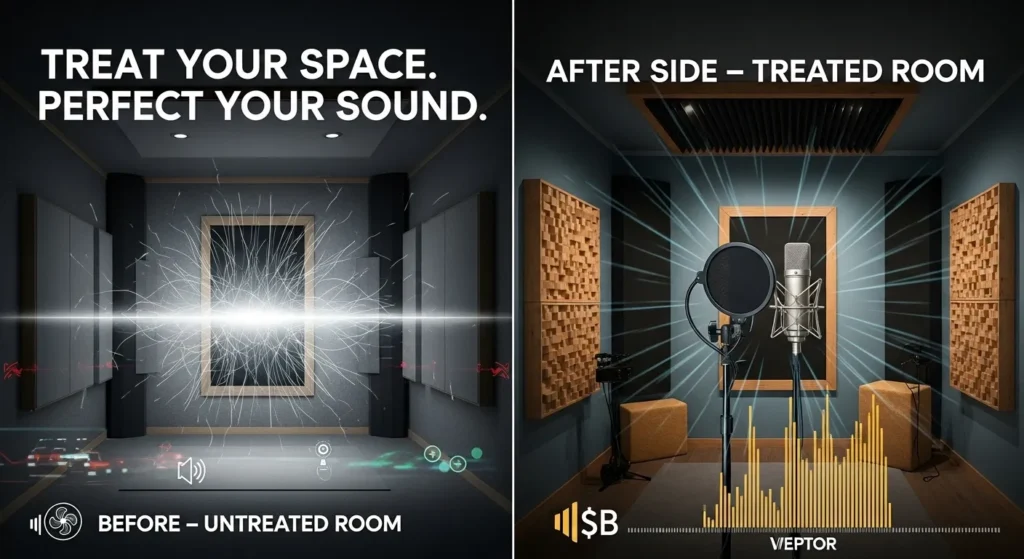
Even the most technically superior microphone will underperform in an untreated acoustic environment. To maximize microphone performance for voice-over:
- Acoustic Treatment: Prioritize minimizing room reverberation and echo. Utilize acoustic foam panels, bass traps, and diffusers to create a “dead” sound. For example, a small vocal booth or even a heavily blanketed closet can significantly improve recording quality by reducing reflections by up to 20 dB.
- Noise Floor Management: Identify and eliminate ambient noise sources (e.g., computer fans, air conditioning, external traffic). Aim for a room noise floor below -60 dBFS (decibels full scale) for professional results.
- Microphone Placement: Position the microphone approximately 6-12 inches from the sound source, slightly off-axis (e.g., 30 degrees) to reduce plosives (“p,” “b” sounds) and sibilance (“s” sounds). Utilize a pop filter at least 1-2 inches in front of the microphone.
- Gain Staging: Properly set the input gain on your audio interface or preamp to achieve a healthy signal level (e.g., peaking between -12 dBFS and -6 dBFS) without clipping or excessive noise.
Final Verdict and Strategic Microphone Selection for Voice-Over
The selection of the “best” microphone for voice-over recording is not a singular choice but a strategic alignment of a microphone’s technical attributes with the specific demands of the recording environment, budget, and desired sonic outcome.
For beginners, a high-quality USB/XLR hybrid like the Blue Yeti Pro offers unparalleled flexibility.
For those investing in professional studio quality and desiring extensive control, the AKG C414 XLII provides unmatched versatility. The Neumann TLM 103 remains the gold standard for pristine, ultra-low noise vocal capture within a treated environment.
Lastly, the Rode NT1-A delivers exceptional value and a remarkably clean sound at a competitive price point, making it ideal for aspiring professionals.
Regardless of your chosen microphone, consistent application of proper recording techniques and acoustic optimization are paramount to achieving broadcast-ready voice-over recordings. Consider testing microphones within your actual recording space to determine the optimal synergy between equipment and environment, a critical factor for consistently exceeding industry quality thresholds.
